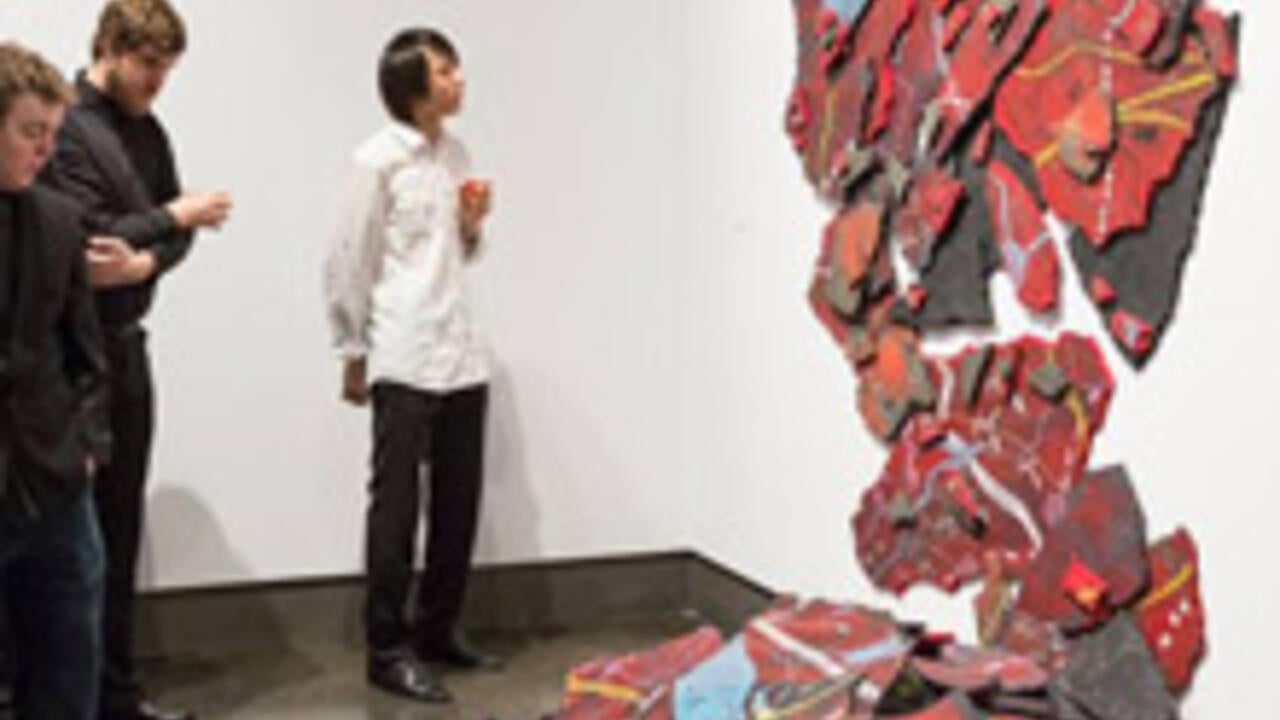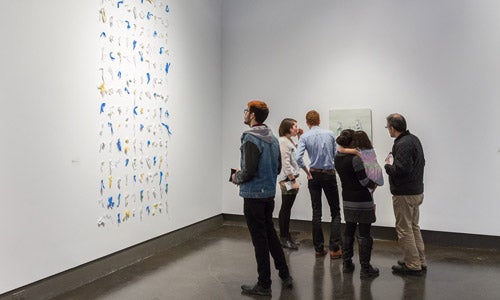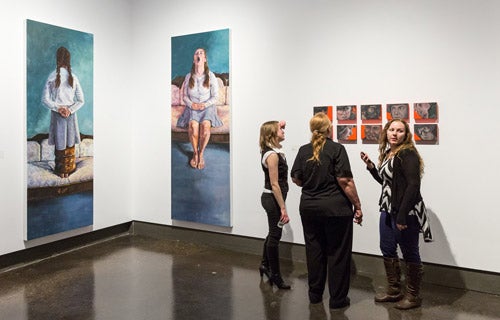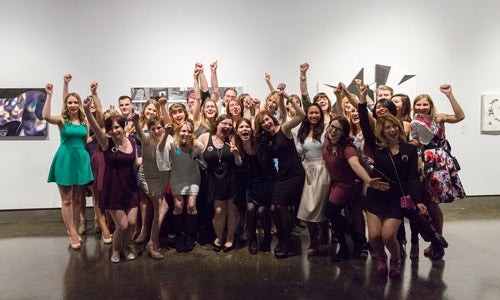
Exhibit a culmination of fine arts undergraduate experience
Zenith ‘reflects diversity of program and creativity of student artists’

Zenith ‘reflects diversity of program and creativity of student artists’
By Katrina Schigas Marketing and Strategic CommunicationsWhile fourth-year engineering students lined Davis Centre with their Capstone Design projects, across Ring Road, fourth-year honours fine arts students are displaying their own summative works at East Campus Hall.
ZENITH: The 42nd Annual Senior Undergraduate Exhibition opened March 17 at the University of Waterloo Art Gallery (Uwag), featuring recent artworks by 32 fourth-year students and representing a broad spectrum of materials, themes, media and concepts.
“The work is a product of self-reflection tied to personal experience and to our culture at large,” said Doug Kirton, chair of the Department of Fine Arts at Waterloo. “It is not only meaningful personally, but critically relevant to others and reflects the diversity of the program and the creativity of the student-artists.”
An installation by fine arts student Julia Martin, (Dis)function, represents a culmination of her artistic journey during the last two years in the program. The four-foot-by-eight-foot sculpture, made using plastic, acetone and glue gun “challenges the dichotomies of want and function to expose how society exceeds the limits of consumption.”

(Dis)function by Julia Martin (left). Photo by Scott Lee.
As challenging as the experience has been, it is equally rewarding, she said. In particular studio time, where students develop an individual body of work throughout their fourth year, has allowed Martin to become the artist she wants to be.
“Having the freedom to take your artistic endeavours wherever you desire and still have the network of professors for feedback and direction is invaluable,” said Martin. “It has provided me with a space to take risks and explore new mediums and techniques that I never thought possible.”
For Zofia Glab, the exhibition offers both a conclusion to the work put in over her final term and a fond farewell to her undergraduate program.
“[The exhibition] is the first foot in the door of professional practice, and the preparation was three months of hard work and planning. Everyone garnered invaluable experience towards coordinating a gallery event and building a cohesive body of artwork,” she said.

Basics by Zofia Glab (right). Photo by Scott Lee.
Classmate Sofia Roy echoed Glab’s sentiments, noting that the exhibition process was an amazing learning opportunity that allowed students to see how much background work goes into putting on a show.
“This has helped prepare me for my journey outside of post-secondary learning by giving me the courage to pursue art as a career,” Roy said. “There is a real sense of community in our program. It is a one of a kind experience, creating ties that will last going into the future.”

Fourth-year honours fine arts students at the Zenith exhibition opening. Photo by Scott Lee.
Glab’s work, a series of ten acrylic paintings on wood blocks entitled Basics, and Roy’s Harmonize, a piece inspired by musical notation and Spirograph shapes, along with works by the rest of the fine arts graduating class are on display at Uwag in East Campus Hall now through April 9. The gallery is open to the public Tuesdays to Saturdays from noon to 5:00 p.m.

Read more
Shop Canadian this holiday season with festive porch plants, fashion-forward apparel, craft spirits and more from Waterloo entrepreneurs

Read more
For more than four decades, Waterloo professor Larry Smith has helped build the University's reputation for innovation and entrepreneurial excellence

Read more
Professor launches Canada’s first large-scale VR use in the classroom, embracing emerging technology and driving the future of education
The University of Waterloo acknowledges that much of our work takes place on the traditional territory of the Neutral, Anishinaabeg, and Haudenosaunee peoples. Our main campus is situated on the Haldimand Tract, the land granted to the Six Nations that includes six miles on each side of the Grand River. Our active work toward reconciliation takes place across our campuses through research, learning, teaching, and community building, and is co-ordinated within the Office of Indigenous Relations.